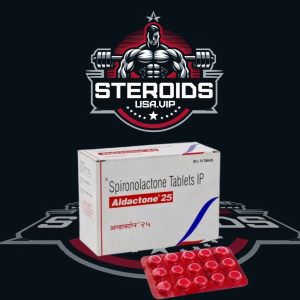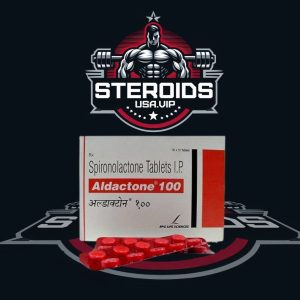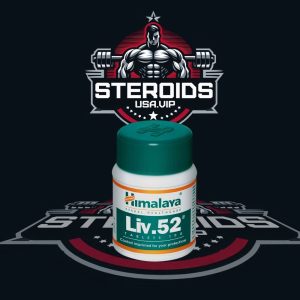PCT
Showing all 3 results
Introduction
In bodybuilding, anabolic steroids are often used to accelerate muscle growth, strength, and recovery. However, after completing a steroid cycle, bodybuilders need to restore their natural hormone balance and mitigate potential side effects. This process is called Post Cycle Therapy (PCT). PCT is essential for minimizing the negative effects of anabolic steroid use, such as testosterone suppression, and ensuring a smooth transition back to the body’s natural hormone production. In this article, we will explore the importance of PCT, how steroids are used during this phase, and the common drugs involved in effective PCT protocols.
Why Post Cycle Therapy (PCT) Is Necessary
During a steroid cycle, the body’s natural testosterone production is suppressed due to the influx of external anabolic hormones. The pituitary gland reduces or stops its production of luteinizing hormone (LH) and follicle-stimulating hormone (FSH), which are essential for stimulating the testes to produce testosterone. After the steroid cycle ends, without proper PCT, the body may take weeks or even months to restore natural testosterone production. This delay can lead to side effects such as muscle loss, fat gain, mood swings, and even long-term hormonal imbalances.
Goals of PCT
PCT aims to achieve several key objectives:
- Restore Natural Testosterone Production: The primary goal of PCT is to kickstart the body’s natural testosterone production and bring hormone levels back to a healthy range.
- Prevent Muscle Loss: PCT helps to maintain the muscle gains achieved during the steroid cycle by ensuring adequate testosterone levels to preserve muscle tissue.
- Reduce Side Effects: Proper PCT minimizes the risk of side effects such as low libido, erectile dysfunction, mood swings, and energy loss.
- Rebalance Hormones: After a steroid cycle, hormonal imbalances can lead to problems like estrogen dominance. PCT helps to rebalance hormones, reducing the risk of conditions like gynecomastia (development of male breast tissue).
Common Steroids and Drugs Used for PCT
PCT typically involves the use of selective estrogen receptor modulators (SERMs), aromatase inhibitors (AIs), and sometimes other compounds to restore hormonal balance and combat side effects. Here are the most commonly used drugs in PCT protocols:
1. Clomiphene Citrate (Clomid)
Clomid is a popular selective estrogen receptor modulator (SERM) used in PCT to stimulate the production of luteinizing hormone (LH) and follicle-stimulating hormone (FSH). By doing so, Clomid helps restart the body’s natural testosterone production. It works by blocking estrogen receptors in the hypothalamus, preventing estrogen from exerting negative feedback on the production of gonadotropins. Clomid is typically taken at a higher dose initially and then tapered down over the course of a few weeks.
2. Tamoxifen Citrate (Nolvadex)
Nolvadex is another widely used SERM in PCT. Like Clomid, Nolvadex works by blocking estrogen receptors, particularly in breast tissue, making it effective for preventing and treating gynecomastia. Nolvadex also stimulates the production of LH and FSH, aiding in the recovery of natural testosterone levels. It is often used in conjunction with Clomid to maximize PCT effectiveness.
3. Aromatase Inhibitors (AIs)
Aromatase inhibitors are used in PCT to reduce the conversion of testosterone into estrogen, which can occur after a steroid cycle. By blocking the enzyme aromatase, AIs lower estrogen levels in the body, helping prevent estrogenic side effects such as water retention and gynecomastia. Common AIs used in PCT include:
- Anastrozole (Arimidex): A potent AI used to control estrogen levels during PCT.
- Letrozole (Femara): A strong AI used to treat and prevent estrogen-related side effects.
- Exemestane (Aromasin): A steroidal AI that is often used to manage estrogen levels during PCT.
4. Human Chorionic Gonadotropin (HCG)
HCG is sometimes used during PCT to stimulate the testes and prevent testicular atrophy (shrinking of the testes) that can occur after a steroid cycle. HCG mimics the action of LH, stimulating the production of testosterone. While HCG is effective for preventing long-term suppression, it should be used carefully, as overuse can lead to further suppression of natural testosterone production if not used correctly.
How to Structure an Effective PCT Protocol
An effective PCT protocol depends on several factors, including the type of steroids used during the cycle, the length of the cycle, and the individual’s response to steroid use. Here is a general overview of how a typical PCT might be structured:
1. Timing of PCT
The timing of when to start PCT depends on the type of steroids used in the cycle. For short-acting steroids, such as testosterone propionate or oral steroids, PCT should begin 2-3 days after the last dose. For long-acting steroids, such as testosterone enanthate or deca-durabolin, PCT should begin 10-14 days after the last injection, as these compounds take longer to clear from the body.
2. Duration of PCT
The typical duration of PCT ranges from 4 to 6 weeks. During this time, users take a combination of SERMs and possibly AIs to restore natural testosterone production and balance hormone levels. It’s important to follow a structured protocol to allow the body to recover fully.
3. Example PCT Protocol
Here is an example of a common PCT protocol that includes both Clomid and Nolvadex:
- Weeks 1-2: Clomid 50mg daily + Nolvadex 40mg daily
- Weeks 3-4: Clomid 25mg daily + Nolvadex 20mg daily
In cases where estrogen levels are particularly high, an aromatase inhibitor like Arimidex (0.5mg every other day) may be added to control estrogen levels.
Potential Side Effects of PCT Medications
While PCT medications are crucial for recovery after a steroid cycle, they can also cause side effects. It’s important to monitor these side effects and consult a healthcare provider if they become problematic. Common side effects of PCT drugs include:
- Clomid: Mood swings, blurred vision, hot flashes, nausea
- Nolvadex: Headaches, nausea, leg cramps, hot flashes
- Aromatase Inhibitors: Joint pain, fatigue, low libido due to reduced estrogen levels
Importance of Blood Tests in PCT
One of the most important aspects of PCT is monitoring hormone levels through blood tests. Blood tests should be conducted both before starting PCT and after completing it to assess how well the body has recovered. Key hormones to monitor include testosterone, estrogen, luteinizing hormone (LH), follicle-stimulating hormone (FSH), and cortisol levels. Blood tests provide valuable insight into whether additional treatment is needed or if further adjustments to the PCT protocol are necessary.
Natural Alternatives to PCT
For bodybuilders who prefer not to use pharmaceuticals, there are natural alternatives that may support hormone recovery after a steroid cycle. While these alternatives may not be as powerful as traditional PCT drugs, they can still provide benefits:
- Zinc and Magnesium (ZMA): These minerals are essential for testosterone production and can help support natural hormone recovery.
- Fenugreek: An herb that may boost testosterone levels and improve libido.
- Ashwagandha: An adaptogen that helps reduce stress and cortisol levels, promoting better hormone balance.
- D-Aspartic Acid (DAA): A natural supplement that can stimulate the production of luteinizing hormone (LH), which in turn boosts testosterone levels.
Conclusion
Post Cycle Therapy (PCT) is an essential part of any steroid cycle, helping bodybuilders restore natural hormone production, prevent muscle loss, and reduce side effects. By using a combination of SERMs, aromatase inhibitors, and other PCT drugs, athletes can successfully recover from their steroid cycles and maintain the gains they’ve achieved. However, it’s crucial to follow a well-structured PCT protocol, monitor hormone levels through blood tests, and consult with a healthcare provider to ensure a safe and effective recovery.


